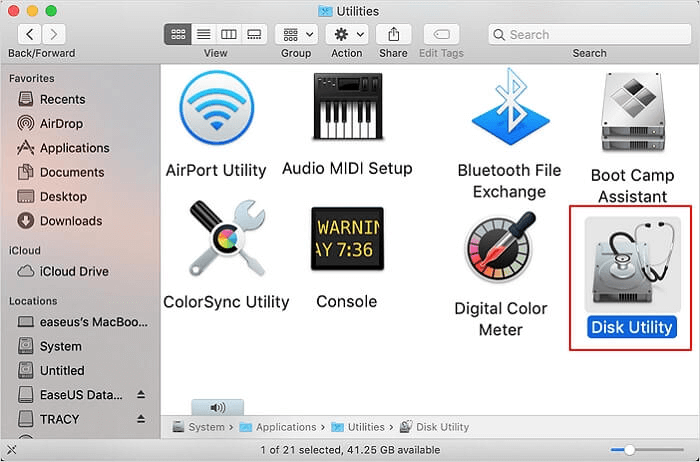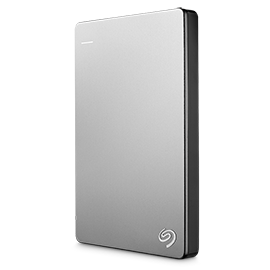
- #Seagate disk utility for mac how to
- #Seagate disk utility for mac mac os
- #Seagate disk utility for mac Pc
- #Seagate disk utility for mac mac
- #Seagate disk utility for mac windows
You should be able to access your drive that way, and, in the Finder menu under Preferences > General, you can check External Drives to ensure that from now on it shows up on your desktop too.

Even if that is the case, the drive will still appear in the left-hand column of the Finder menu under Locations.
#Seagate disk utility for mac mac
It could be that your Mac already recognizes the device, but just isn’t showing its icon on the desktop screen.
Mac not formatted to display external drives on the desktop. For more information, go to the same menu option, then select System Report. The best way to look for an incorrectly formatted drive is to go toĪpple (in the top toolbar menu) > About This Mac > Storage. #Seagate disk utility for mac Pc
If you’ve got a PC or laptop, it’s worth connecting and seeing if you can access the files through another device.
#Seagate disk utility for mac windows
It could be that you are trying to connect something only fit to interact with Windows devices. Not every external drive is optimized for Macs. Restarting your Mac essentially clears your macOS’s memory and starts it up fresh. Or press and hold the power button and, when a dialog box appears, click Restart or press R. Hopefully, some data damage can be fixed by restarting.
Reboot your Mac. Sometimes, if a USB disk won't boot, the cause is a macOS issue. If you’ve got another port, try connecting the device to that one. It could be a hardware issue with the Mac. Try connecting the same device with a different cable. Assuming it’s plugged in correctly, not wobbly or loose, the cable could be at fault.  Check whether the drive is properly plugged in. It sounds obvious, but since this relies on a wire - either a USB cable or HDMI cable - if it’s not connected properly then it won’t appear on your desktop. While it’s impossible to instantly figure out why an external disk drive is not showing up, you have to try to fix the problem.
Check whether the drive is properly plugged in. It sounds obvious, but since this relies on a wire - either a USB cable or HDMI cable - if it’s not connected properly then it won’t appear on your desktop. While it’s impossible to instantly figure out why an external disk drive is not showing up, you have to try to fix the problem. #Seagate disk utility for mac how to
How to fix an external disk drive that won't show up on a Mac
Your drive has been corrupted or broken. There could be a few reasons why SSD isn’t making an appearance (just as any other external drive), the most common being: Let’s say you’ve encountered the problem of SSD not showing up. Why your Mac does not recognize external hard drive How to make Ext2/Ext3 drives readable on Mac. Alternative ways to recover data from an external hard drive.  A few more tips on getting your files back. An easy way to recover lost files on an external hard drive. How to recover data from a crashed drive. Repair the failed external drives with First Aid. How to show connected devices in Finder. How to fix new hard drive not showing up in Finder. How to fix an external disk drive that won't show up on a Mac. Why your Mac does not recognize external hard drive. Let’s take a look at why this is happening and how you can fix the external hard drive not showing up problem: And besides, there can be a risk that data on the external USB pen, hard, or flash drive is corrupt, which means you can’t transfer what you need between devices at all.Ĭorrupt data can be one reason your Mac won't recognize an external drive, but there are other reasons too. It’s annoying, especially when you need to transfer something right then. However, sometimes, an external hard drive doesn't show up. Apple likes to ensure these are easy to find, so they also appear in the Finder in the left-hand column under Locations. Most of the time, when you connect an external hard drive to your Mac’s USB port, you soon see it mount on the desktop.
A few more tips on getting your files back. An easy way to recover lost files on an external hard drive. How to recover data from a crashed drive. Repair the failed external drives with First Aid. How to show connected devices in Finder. How to fix new hard drive not showing up in Finder. How to fix an external disk drive that won't show up on a Mac. Why your Mac does not recognize external hard drive. Let’s take a look at why this is happening and how you can fix the external hard drive not showing up problem: And besides, there can be a risk that data on the external USB pen, hard, or flash drive is corrupt, which means you can’t transfer what you need between devices at all.Ĭorrupt data can be one reason your Mac won't recognize an external drive, but there are other reasons too. It’s annoying, especially when you need to transfer something right then. However, sometimes, an external hard drive doesn't show up. Apple likes to ensure these are easy to find, so they also appear in the Finder in the left-hand column under Locations. Most of the time, when you connect an external hard drive to your Mac’s USB port, you soon see it mount on the desktop. 
Click on the Apply button and wait for the Done button to activate.Disk Drill brings deleted files back from the dead.
#Seagate disk utility for mac mac os
Set the Format type to Mac OS Extended (Journaled.)
In the drop down panel set the partition scheme to GUID. Use the adjustable Pie chart to set the number of partitions if you want more than one. If both are activated, then choose Erase. Click on the Partition or Erase tab in the Disk Utility toolbar depending upon which is activated. After Disk Utility loads select the drive (out-dented entry with the mfgr.'s ID and size) from the side list. Open Disk Utility in the Utilities folder. Using Time Machine for backup requires a volume that is at least 2 or 3 times the capacity of the computer's HDD. But as I said earlier if you don't need to use it on Windows and wish to use if for backup on the Mac, then prep it exclusively for the Mac. But you can re-prep the drive using GUID partition scheme for two partitions and format one of them for MS-DOS or ExFAT to use on Windows. Because the drive was formatted on a Windows system you cannot partition it via the Mac. Unless you need to retain the Windows files you have put on the drive and copied to the computer, then I suggest you simply re-prep the drive for use on the Mac.








 0 kommentar(er)
0 kommentar(er)
